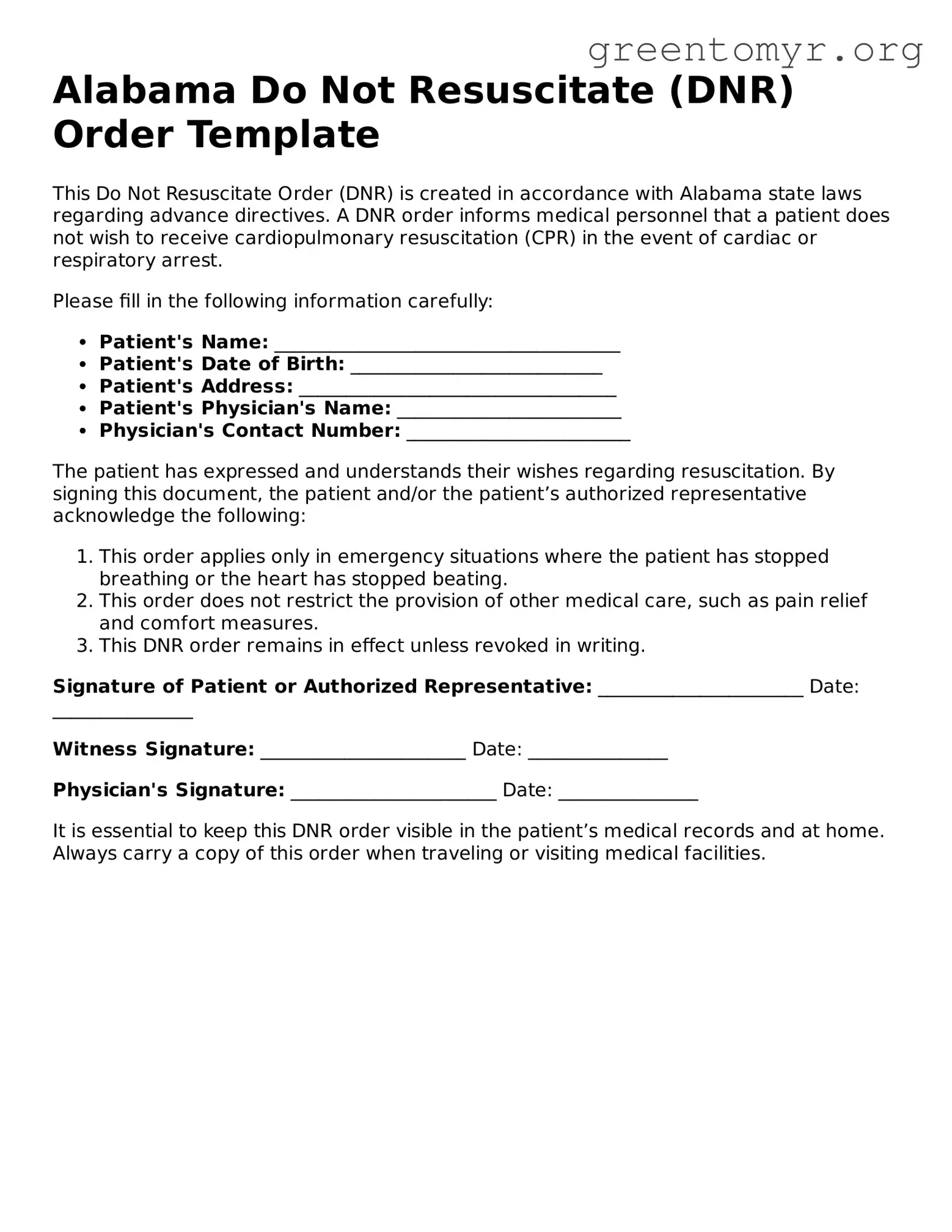What is a Do Not Resuscitate (DNR) Order in Alabama?
A Do Not Resuscitate Order is a medical order that tells healthcare providers not to perform cardiopulmonary resuscitation (CPR) if a person's heart stops beating or if they stop breathing. In Alabama, DNR Orders are used to respect the wishes of individuals who do not wish to receive life-saving measures in the event of a medical emergency.
Who can sign a DNR Order in Alabama?
In Alabama, a DNR Order can be signed by the patient or a legally authorized representative. If the patient is unable to sign, family members or a designated healthcare proxy may act on their behalf. It's important that the individual signing the order is legally able to make medical decisions for the patient.
To obtain a DNR Order form in Alabama, you can contact your healthcare provider, hospital, or local health department. Many health care facilities have copies of the form readily available. Additionally, you can find the form online through the Alabama Department of Public Health's website.
The DNR Order form typically includes the following information:
-
Patient's full name and date of birth
-
Signature of the patient or authorized representative
-
Signature of the physician or healthcare provider
-
Date of signing
Make sure that all required fields are filled out completely and accurately to ensure the DNR Order is valid.
Is a DNR Order the same as an Advance Directive?
No, a DNR Order and an Advance Directive are different documents. While a DNR specifically instructs healthcare providers to refrain from resuscitation efforts, an Advance Directive outlines a person's overall preferences for medical treatment and can include decisions about life support, pain management, and other healthcare preferences. It is possible for someone to have both documents in place.
It's essential to keep the DNR Order form in an easily accessible location. Patients should discuss its location with family members and caregivers. Placing a copy in a visible spot, such as on the refrigerator or with their medical records, can ensure that emergency personnel can find it quickly if needed.
Can a DNR Order be revoked or changed?
Yes, a DNR Order can be revoked or changed at any time. The patient or the authorized representative can do this by simply notifying their healthcare provider and ensuring that a new DNR Order is created if desired. It’s advisable to communicate any changes to family members and caregivers to avoid confusion.
What should I do if I change my mind about having a DNR Order?
If you change your mind about having a DNR Order, it is crucial to inform your healthcare provider as soon as possible. Revoking the order can typically be done verbally, but it is best to follow it up with formal documentation, such as a new order, stating your current wishes. Your healthcare team will guide you through the specifics to ensure your preferences are clearly conveyed.
Will having a DNR Order affect my medical care?
Having a DNR Order does not affect the overall quality of medical care you receive. It specifically addresses resuscitation efforts during a cardiac or respiratory emergency. Healthcare providers are still required to provide all other necessary medical treatments and interventions to maintain your comfort and manage any health conditions you may have.
